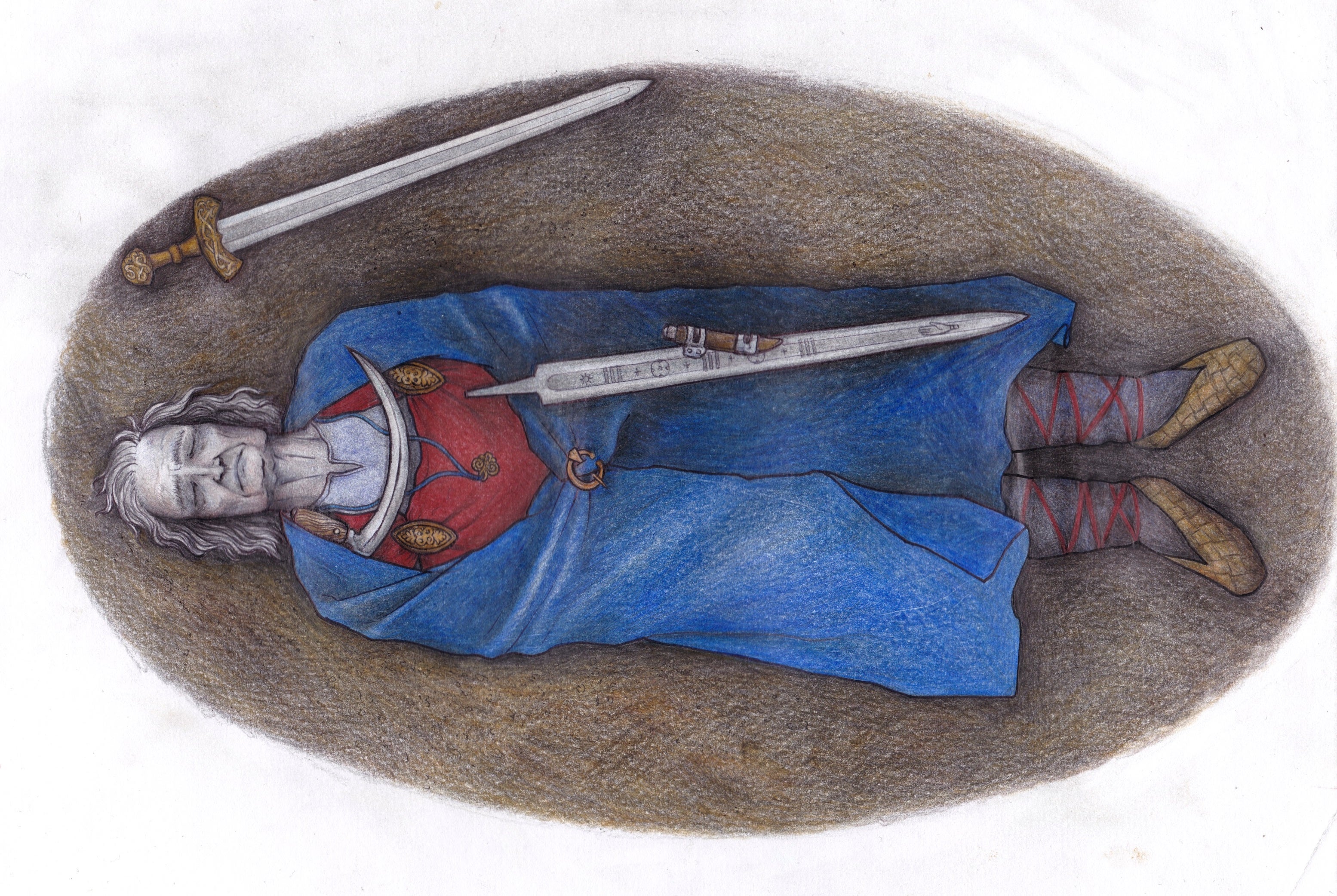Scientists discover medieval warrior given lavish burial 1,000 years ago was likely non-binary
The person was given an elaborate burial in a ‘female-type dress’ with furs, feathers, and a sword

Modern analysis of a grave found in Finland 50 years ago challenges traditional beliefs about gender roles in the Iron Age and early medieval times, and suggests that non-binary people may have been valued members of these communities.
The research, published in the European Journal of Archaeology, re-assessed a grave that is at least 1000 years old which was first discovered at Suontaka Vesitorninmäki, Hattula, Finland, where a sword with a bronze handle was found.
Earlier studies of the grave had concluded based on the jewellery and other evidence, that the site was likely a double burial of both a woman and a man, or a weapon grave of a female, indicating the presence of strong female leaders or even female warriors in the Late Iron Age in Finland.
However, according to the current study by scientists, including those from the University of Turku in Finland, only one person – wearing typically feminine clothes and a hilt-less sword placed on their left hip – had been buried in the grave.
Based on analysis of DNA collected from the site, the researchers said the buried individual may have had the sex-chromosomal aneuploidy XXY, or Klinefelter syndrome, with male and female anatomical features.
The scientists, however, emphasised that the DNA analysis was based on a very small set of data.
According to Ulla Moilanen, doctoral candidate of archaeology from the University of Turku, the buried individual may have been a highly respected member of their community and was laid in the grave on a soft feather blanket with valuable furs and objects.
The individual may be an example of someone whose social identity settles outside the traditional division of genders, Moilanen noted in a statement.
If the characteristics of the XXY chromosomal aneuploidy had been evident on the person, the researchers say the individual might not have been considered strictly a female or a male in the Early Middle Ages community.
But the researchers added that the person’s biology may not have dictated their self-identity.
“We have no way of knowing the Suontaka individual’s gender identity. What we know is that the person was given an elaborate burial, in a female-type dress and with furs, feathers and a sword - with another sword possibly placed in the grave late,” Postdoctoral Researcher and study co-author Elina Salmela from the University of Helsinki, noted in a tweet.
But based on the results, the scientists speculate that in early medieval Finland, “which is often considered a masculine and warlike society,” there may have been some individuals who did not fit into a binary gender model.
“These individuals could also have been respected and considered important, and their gendered identities could be elaborately represented and remembered in the content of their burials,” they wrote in the study.
Join our commenting forum
Join thought-provoking conversations, follow other Independent readers and see their replies
Comments
Bookmark popover
Removed from bookmarks